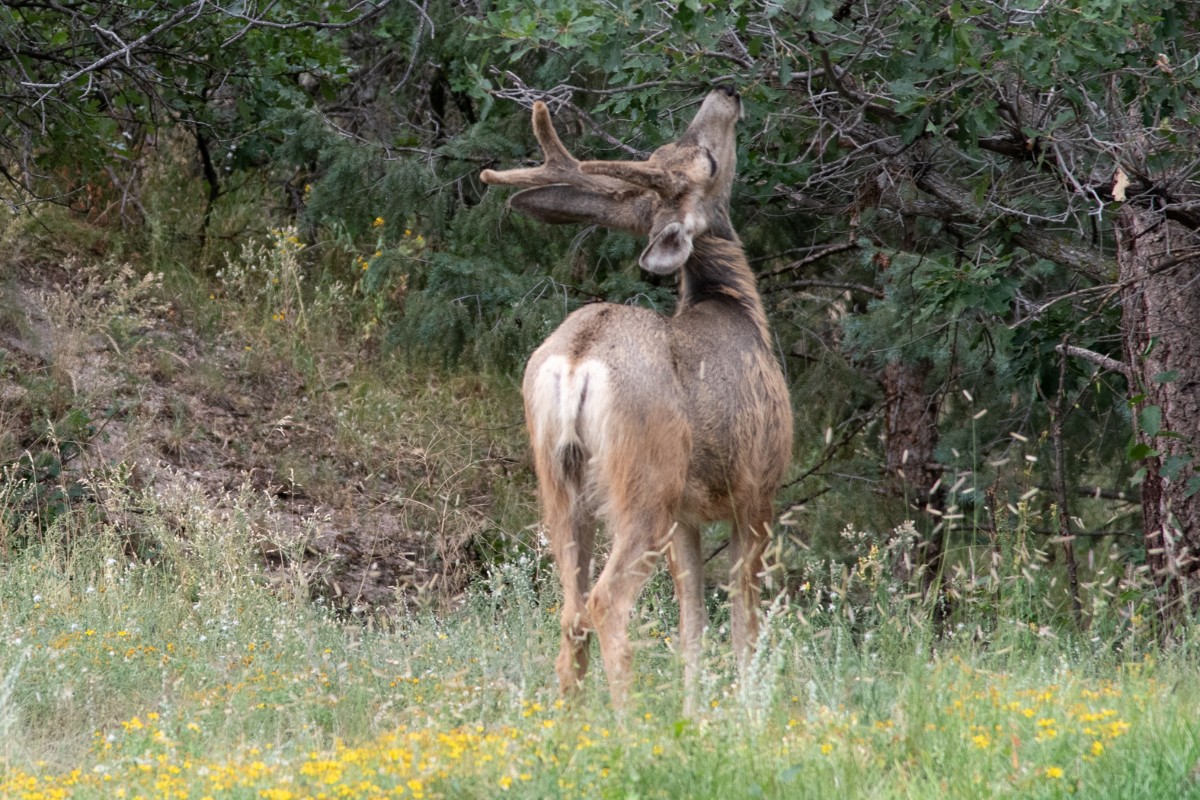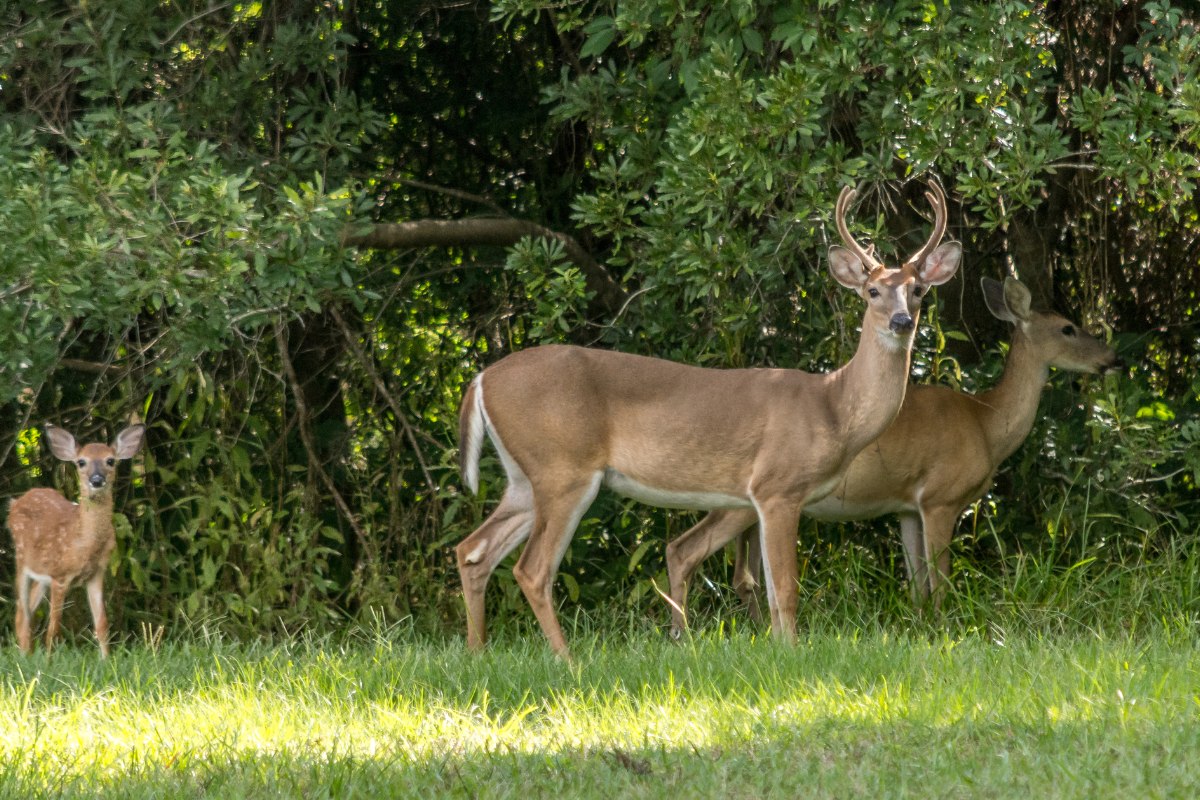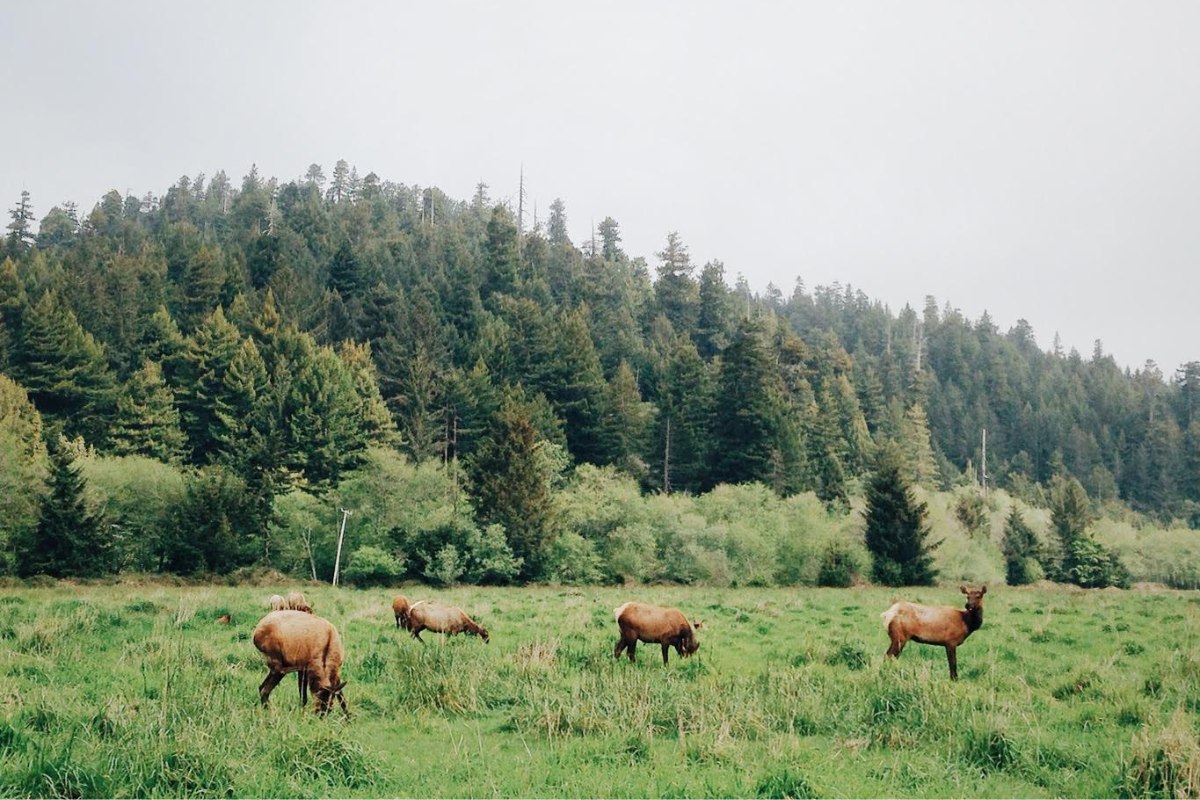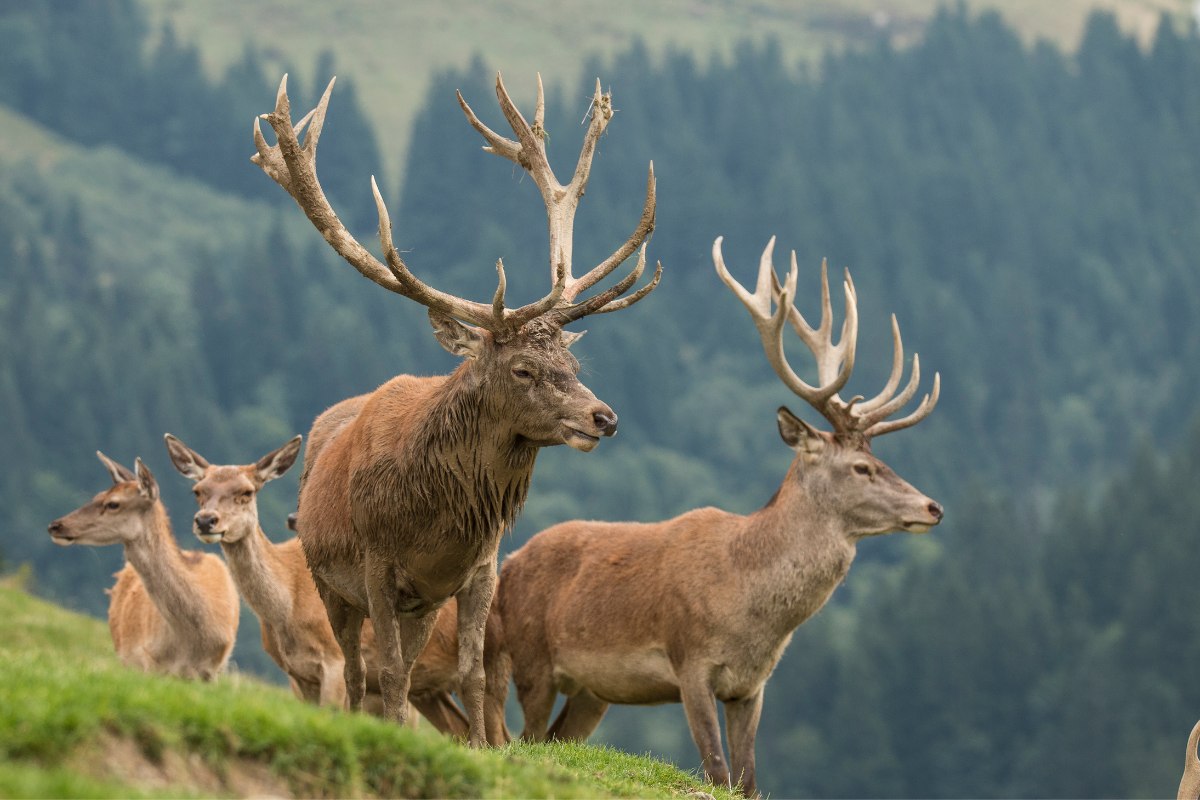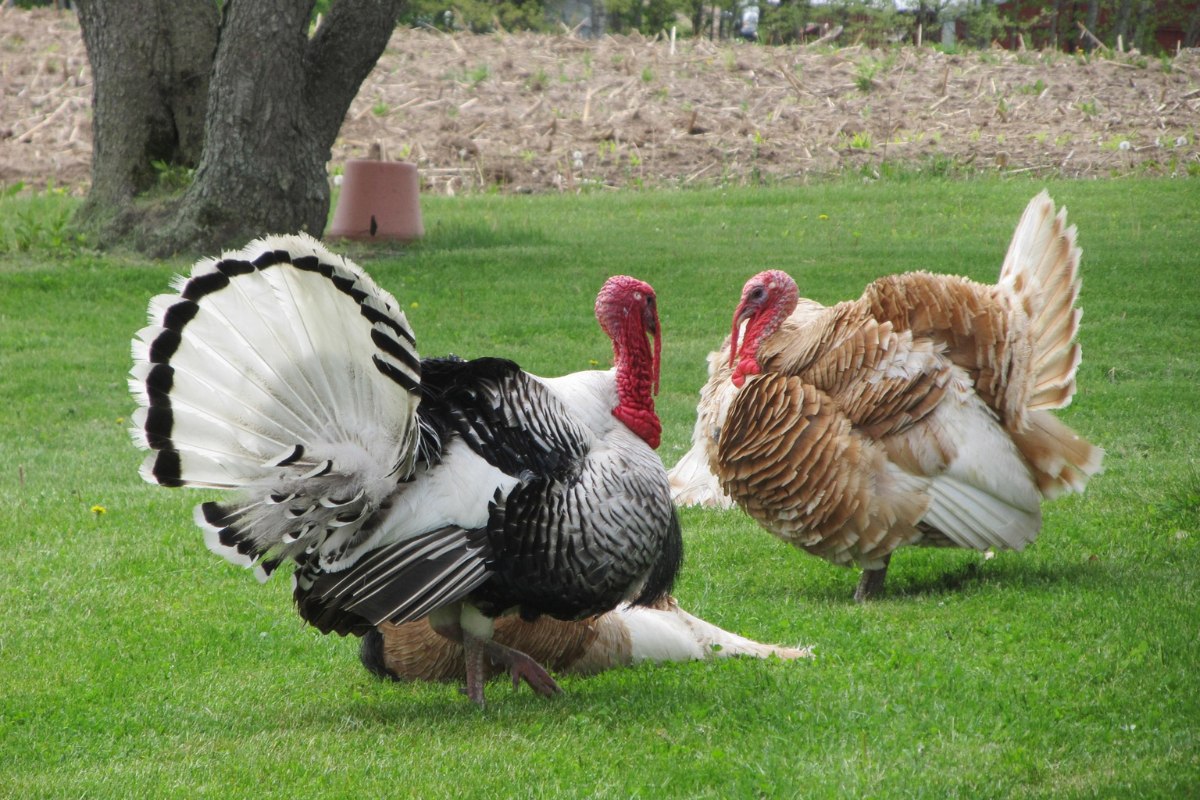All good woodsmen know their trees. The trees of the forest provide shelter for local wildlife within hollow trunks, support for nests, and a media for the woodpecker to do his own excavation. They provide shade from the hot summer sun and a wind or snow break during the cold winter months. But most importantly, our native trees provide a food source for wildlife that can ensure survival and support diverse communities. This food also serves as an attractant to the game animals we hunt, so understanding which animals target which trees at what time of the year can be vital to the success of your season.
Plant identification does not always require an intimate knowledge of every species in the forest. You can learn techniques such as how to identify plants within a landscape, natural or not, from the many years and time spent outdoors. The most important thing to remember is to learn the characteristics that are important for your ability to recognize a potential game magnet when you see one. There are several tools that will help you along the way, especially if you are a novice and are approaching this topic with no prior knowledge.
Field Guide
A quality field guide for the trees in your region of the country will typically consist of a photo of the tree’s leaves and hopefully its bark. Also included will be a description of the tree’s habit or form, native range (areas of the country where it can be found naturally), and a physical description of the height, spread, leave arrangement, leaf color (including fall), bark, flowers, and fruit, and the growing conditions which the tree favors. These are the key characteristics of which you will want to familiarize yourself in order to accurately distinguish between species.
Sometimes additional comments are included that identify specific characteristics to look for to discern a particular tree from others of the same genera or those of close relation. These guides are small enough to easily fit in your pack and are a great way to entertain and educate yourself while scouting or hiking.
Sketchbooks
Sketchbooks are a great idea that can be used to make notes about a species that will help you remember a certain characteristic. Remember to add information about where the plant was found, for example, the north or south slope and soil conditions.
Don’t worry if you are not a soil scientist or geologist. Just notes like “rocky,” “sandy,” or “wet” can be very helpful. Any neighboring plants that you can identify may also be habitat indicators or common partners (plants that often found in proximity to other specific species). Being able to add a drawing of part of the tree that may not be illustrated in the field guide will provide a visual aid that you can return to on your next encounter.
Digital Cameras
Digital cameras also help to quickly document plant characteristics and the environment in which it is found. The images will allow you to enhance your visual library, making identification at a glance more obtainable.
Hand Pruners
Hand pruners are a best friend for when you find that plant that you just can not put a finger on. By taking a cutting home, you can have the real thing right in front of you while utilizing other resources like the internet to determine the plant’s identity.
The Latin Names
When you have identified the tree you are looking at, you will notice in your field guide a common name and the scientific name printed in italics and always in Latin. For a hunter, you are generally not interested in all the scientific data or Latin names, but some quick basics that may save you some time when searching for a plant can be found in its scientific name.
The first word of the scientific name is the genus and the second is the species. Without going into the whole classification principles, the genus is essentially a group of individuals which express defining traits apart from other groups. For example, in Quercus alba, Quercus is the genus used to distinguish the group of trees known as oaks. The second word, alba, identifies the species within that group as the White Oak.
Why is this important? Many trees have multiple common names depending upon language, country, region, or even just local tradition. The scientific names are used to create a worldwide identification. It is helpful to understand these basics not because the average hunting buddy is going to say “I found a Quercus alba loaded with acorns,” but because if you can determine that you are looking at an oak, most field guides are divided by genus. So you can turn straight to that section and save some time thumbing through the pages.
Also, many trees in the same genus can be tough to distinguish but have similar traits. You may be able to gather enough general information from other species within the genus to make a decision without knowing the exact species. Oaks can be particularly hard to tell apart from each other once the leaves have fallen.
The Trees
Knowing your trees benefits you as a hunter because it gives you a leg up on the competition with any other hunter in your area and of course your quarry. Certain trees provide valuable resources to both you and the game you’re chasing. Understanding the value of a species of tree can improve your hunting, land management, conservation, and will make you a better woodsman.
Here is a list of the top ten trees native to the mid-Atlantic region of the United States that are of particular interest to most hunters and why. This list is by no means exhaustive, as there are countless other trees, shrubs, vines, and herbaceous plants that are also beneficial.
White Oak (Quercus alba)
The White Oak is the great monarch of the woods for its beauty and one of the most prized natural food sources of the whitetail deer. They produce a large acorn up to 1 1/4″ long and when they fall in September through October, sometimes even into November, depending upon location and climate, deer will often leave the agricultural fields or other food sources in the area and gorge themselves on acorns.
These trees are commonly found across the south, mid-west, and north, but tend to thin out in the New England states. Their acorns are also food for wild turkeys, squirrels, and wild hogs.
Northern Red Oak (Quercus rubra)/Southern Red Oak (Quercus falcate)
Second only to the White Oak on the white-tailed deer’s menu, the Red Oaks are another favorite amongst the acorn eaters of the forest.
Apple
The number of apple tree cultivars is endless and deer love them all. Apple orchards or strategically planted apple trees can attract deer-like moths to a flame. Old homesteads of the mid-Atlantic region almost always had their own apple trees.
Although many of these farms are gone, some of the trees remain and some wild varieties can still be found. These are hot ticket items from August through October when the apples are hitting the ground. Cedar Apple Rust is a problem for apple growers. The spores of this fungus can infect the fruit and reduce size, yield, and desirability. But deer will still eat the apples regardless.
Honey Locust (Gleditsia triacanthos)
Also known as the Thorny Locust or a Bean Tree, this species also provides a good food source for whitetails. The deer will eat the seed pods which are shaped like a bean pod and whose flesh is non-toxic, unlike the Black Locust, when they fall in autumn. When agriculture is unavailable and during low mast crop production years, deer will often hit these beans hard. Find a good tree nearby for like their name says, the Thorny Locust is well guarded by clusters of sharp, needle-like thorns up to 10 cm in length.
Hickory (Shagbark & Smooth Bark)
Hickory nuts are a favorite amongst the grey and fox squirrels and are always hot spots come squirrel season. In some areas, wild turkeys also will take the opportunity to feed on fallen hickory nuts, particularly when the hard shells have been broken by the chisel-like teeth of a squirrel.
Pecan (Carya illinoensis)
The pecan is one of North America’s greatest native trees. Its nuts are sold around the world and are Georgia’s leading agricultural export. It’s true and the Peach State should be the Pecan State! Anyway, the pecan’s native range is fairly confined to areas along the Mississippi River and sporadic pockets here and there. But because of growers needing to keep up with the massive market demands, pecan orchards have been planted and cultivated for centuries. So this tree has expanded its range in many areas of the Midwest and the south.
The pecan husks that house the valuable seeds are up to 2″ in length and rival the oaks for their desirability by local wildlife. Whitetails, squirrels, and hogs love these delicious nuts and will gobble them up as soon as they start hitting the ground in late November through December (south).
Flowering Dogwood (Cornus florida)
Amongst the beauty of a dogwood’s flowers is its role in the food chain. Deer and rabbits browse on the foliage and young twigs/stems, while the fruits are enjoyed by songbirds, skunks, squirrels, and wild turkeys between the months of July and November. This understory tree may not be the hot topic of the day in a deer’s search for food. But because it appeals to such a diverse amount of wildlife and provides nourishment almost year-round, it earns a spot in the top 10.
Tulip Poplar (Liriodendron tulipifera)
The Tulip Poplar or Yellow Poplar is another terrific specimen of the woods. It can grow to almost 200′ high with a trunk diameter of nearly 10 feet but is typically found in the 70-100 feet height range. Its flowers are beautiful and produce a small seed that is greedily taken by squirrels.
Deer are often seen chewing on the sappy young sprouts or very young trees. But the real characteristic that makes the poplar tree a hunter’s friend is its straight-growth habit. The Tulip Poplar will often grow straight up with no branching until about 3/4’s of its height (60-80 feet). Tall, straight, and branchless is the ideal tree for the use of a climbing stand.
The trunk also tends to hold its diameter more than other species, meaning that when you attach the cables of your climbing stand at the base of a poplar, you do not have to account for as much trunk taper as you increase in height. The soft bark also allows for sure setting of the stand’s teeth for a good secure setup.
Green Ash (Fraxinus pennsylvanica)/White Ash (Fraxinus Americana)
There is little value from these trees in regards to food sources for wild game. However, they are plentiful, especially in wet areas and creek bottoms where deer tend to roam. Therefore, they are valued greatly for treestand setups.
Ash trees, despite their wood being harvested for the making of baseball bats, are relatively easy to install foot pegs or winders into, and the bark grabs them quickly, aiding an easy install. Also, ash trees tend to branch often and low offering plenty of cover and easy access to stands. White-tailed bucks seem to favor saplings and young trees for making rubs.
Eastern Red Cedar (Juniperus virginiana)
Notice the Latin name here? Eastern Red Cedar is actually a juniper rather than a true cedar. Just a little trivia for you and a good example of why the common names can be confusing.
These trees are native to the eastern U.S. and provide great cover for wildlife. They often grow in dense stands that offer a windbreak, shelter from adverse weather, and great bedding areas where white-tailed deer feel secure.
Beware, however, of cedar apple rust. Cedar apple rust is a fungus that grows on red cedars and whose spores infect the leaves and fruit of most apple cultivars. To avoid infection without/before fungicide treatment, apple growers would cut down every Red Cedar tree found within 1/2-1 mile radius of their orchards. If you are relying on an apple orchard or apple trees to attract deer, to obtain maximum crop yield, you may want to adopt a similar approach if applicable.
There are many trees that did not make the list. Some obvious ones are Beech and Pines. These, like others unmentioned, are also valuable food sources and great for stand locations, etc. but fall just outside of the listed top ten.
The great thing about trees is that they are all around us. Most of our native trees are planted/voluntarily grown in landscaped yards, parks, or even as street trees so there is ready access whenever you have a chance to stop and observe what makes one stand out from all the others. Then, when you return to the woods to scout or on your next hunt, you will be able to identify which trees could be attracting or holding game in your area. It may be the difference maker you need to harvest your next longbeard or big buck.
